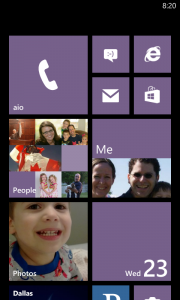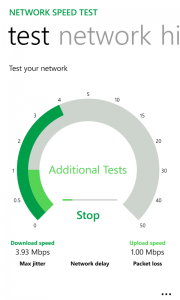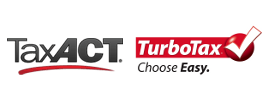This year, I made two significant mobile communications changes: I switched to a prepaid carrier and, at the same time, purchased my first smartphone.
Why Aio? First, my wife and I are saving over $30 per month on Aio compared to what we would be paying on a Sprint network family plan with two smartphones. Second, I didn’t want to be tied to a contract.
I chose Aio over other prepaid carriers and mobile virtual network operators (MVNOs), such as Boost, Straight Talk, Net10, Credo, and T-Mobile because Aio is on the AT&T network, which has the best coverage of any US carrier in my part of the country, and it’s actually an AT&T subsidiary. Also, I wanted to get my hands on the Nokia Lumia 620 — only available in the US on Aio and for the low price of $100 (as opposed to $200 elsewhere) — because it’s an affordable introduction to the Windows Phone 8 operating system.
Phone Selection
Aio uses GSM wireless technology, so any unlocked GSM phone will do — that includes AT&T and T-Mobile phones. To make things easier, Aio sells a small selection of phones, including the high-end Apple iPhone 5s and Samsung Galaxy S4 phones as well as a number of low and mid-range smartphones.
Data Plans
All data plans include unlimited talk, text and data. Where the plans differ is in the amount of high-speed data access offered. Once your allotment of high-speed access is reached, your data speed is throttled down to around 256Kbps. Heavy data users beware: Aio’s caps its fastest speed (4G LTE) at 8Mbps. So, even the fastest data speeds are reduced. The plans are as follows:
- $40 for 250MB of high speed (for basic phones only)
- $55 for 2GB of high speed
- $70 for 7GB of high speed
Data Speeds
I’m on the $55 plan, and I used about a quarter of my high-speed allotment in the first month. My Lumia 620 (I really dig this phone btw) doesn’t do 4G LTE, but it does have HSDPA technology. It clocked at about 4Mbps (download) the other day when I performed a speed test in my office building. Also, I seem to be getting better coverage in my office building and parking garage than I did on the Sprint network.
Customer Service
I contacted Aio’s customer service department four times — twice by chat and twice by phone.
The Good: I didn’t have to wait long, either by chat or by phone, to reach a customer service agent. All agents were friendly.
The Bad: The agents didn’t always offer the correct answers. Before ordering my phone, for instance, I contacted customer service to confirm the SIM card was included in the purchase of my Lumia 620; the first agent (via chat) told me I would have to pay $10 extra for the SIM card. I dealt with another agent an hour or so later (also via chat) who assured me SIM cards are included when purchasing phones through Aio, which is what I expected.
No International Roaming
Aio Wireless (along with most other prepaid carriers) doesn’t offer international roaming, which may be of concern to those who travel frequently and wish to keep the same phone number. One workaround is to use AT&T’s Go Phone service, offering roaming in Mexico and Canada, during the time of travel. Or, if you don’t mind getting a different number, you could bring your GSM phone wherever you travel and buy a SIM card from a local prepaid carrier.
Hello, Goodbye
Evidently, Aio was just a fun little AT&T experiment. They wanted learn the ins and outs of managing a network of independent prepaid dealers.
AT&T is acquiring Leap Wireless, the company that owns Cricket Communications. Once the merger is complete, Aio’s operations will be combined into Cricket’s. Personally, I prefer the Aio (which means ‘I say’) brand to Cricket. The sound of chirping crickets connotes silence, which in the world of wireless communications means dead zones and dropped calls. But Cricket is a firmly established brand, so AT&T is probably making the right decision. Aio recently addressed merger questions on its Facebook page.
I will hang on to Aio for as long as I’m satisfied with the service. We’ll see how Cricket works out. If it doesn’t, I there is money to be saved (while remaining on the AT&T network) with prepaid carriers like Net10 and Straight Talk.
Hello Aio. And fare thee well.
UPDATE 2/9/2014: Aio recently updated its pricing structure, making its plans much more competitive with StraightTalk and Net10. In addition to lower pricing, a couple of plans will see increases in high-speed data limits. Also, the $40 Basic plan is no longer restricted to smart phones. Furthermore, customers who enroll in auto pay will receive a $5 monthly credit. The new plans are as follows:
| Plan Name | Monthly Fee | High-Speed Data Allowance |
|---|---|---|
| Aio Basic | $40 | 500 MB |
| Aio Smart | $50 | 2.5 GB |
| Aio Pro | $60 | 5 GB |




